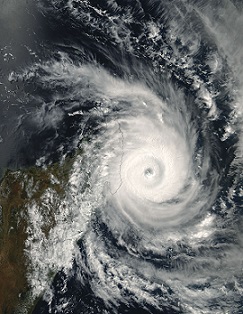A Historic Day in Our Fight Against Climate Change
By Administrator Gina McCarthy
Protecting the air we breathe and slowing the effects of climate change are a core part of EPA’s mission. And today, I am proud to say that we, alongside nearly every country on Earth, have taken another historic step in carrying out that mission by cutting down on the use of damaging hydrofluorocarbons, or HFCs.
Countries, including the United States, have long used HFCs to meet their refrigeration and air conditioning needs. These greenhouse gases can have warming impacts hundreds to thousands of times more potent than carbon dioxide. In a nutshell, these HFCs cool our homes and chill our food, but they are turning up the temperature of our planet.
And over the next several years, HFC use is expected to not only grow—but multiply. Their emissions are increasing by 10 to 15 percent on an annual basis globally. That’s why, this week in Rwanda, world leaders took a giant leap forward by agreeing to a global phase-down of these harmful gases.
As head of the U.S. delegation to the Meeting of the Parties to the Montreal Protocol, I met with leaders from around the world who share a commitment to protecting the planet and scaling down these harmful gases. Together, joined by Secretary of State John Kerry, we agreed to take action and get the job done. And that’s exactly what we did.
The Montreal Protocol, a successful global environmental agreement, is already putting the world on track to heal the Earth’s ozone layer by mid-century. And this week, 197 countries agreed on an ambitious amendment that will help protect Earth’s climate by significantly reducing the consumption and production of HFCs.
By acting now, we’re avoiding up to a full half a degree centigrade of warming by the end of the century. This is a big deal, because our scientists say very clearly that we must keep our planet’s temperature from rising 2 degrees above our normal temperature. And today’s announcement brings us that much closer to avoiding that “point of no return.”
We’re also agreeing to devote more resources to finding and using safer, more climate-friendly alternatives. And we’re building on the significant gains we’ve already made to protect ourselves and our children from the dangerous effects of climate change.
At EPA, we’re doing our part to cut down on HFCs here at home.
Just two weeks ago, we finalized two rules that will reduce the use and emissions of HFCs. The first—under our Significant New Alternatives Policy (SNAP) program—adds new alternatives to the list of acceptable substitutes for HFCs. It also sets deadlines to completely stop using HFCs in certain applications where safer alternatives are available. The second rule strengthens our current refrigerant management practices and extends them to include HFCs.
This week has truly been historic. Our global commitment to protecting our planet brought us to this moment. It’s an exciting time for all of us who have worked so hard to get here. And while we have seen many significant successes under President Obama’s leadership in tackling climate change, this day will be remembered as one of the most important. I was proud to represent the United States in Rwanda this week. There is no doubt in my mind that U.S. leadership was essential to reaching this agreement.
Yes, there will be challenges ahead. But the past week reminds us that when faced with clear science, when buoyed by the strong partnership of developed and developing countries working together, we can make great strides to protect the one planet we have.


